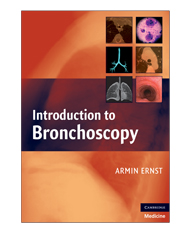Book contents
- Frontmatter
- Contents
- Contributors
- Introduction
- Abbreviations/Acronyms
- 1 A Short History of Bronchoscopy
- 2 Multidetector Computed Tomography Imaging of the Central Airways
- 3 The Larynx
- 4 Airway Anatomy for the Bronchoscopist
- 5 Anesthesia for Bronchoscopy
- 6 Anatomy and Care of the Bronchoscope
- 7 Starting and Managing a Bronchoscopy Unit
- 8 Flexible Bronchoscopy: Indications, Contraindications, and Consent
- 9 Bronchial Washing, Bronchoalveolar Lavage, Bronchial Brush, and Endobronchial Biopsy
- 10 Transbronchial Lung Biopsy
- 11 Transbronchial Needle Aspiration
- 12 Bronchoscopy in the Intensive Care Unit
- 13 Bronchoscopy in the Lung Transplant Patient
- 14 Advanced Diagnostic Bronchoscopy
- 15 Basic Therapeutic Techniques
- Index
- References
5 - Anesthesia for Bronchoscopy
Published online by Cambridge University Press: 07 July 2009
- Frontmatter
- Contents
- Contributors
- Introduction
- Abbreviations/Acronyms
- 1 A Short History of Bronchoscopy
- 2 Multidetector Computed Tomography Imaging of the Central Airways
- 3 The Larynx
- 4 Airway Anatomy for the Bronchoscopist
- 5 Anesthesia for Bronchoscopy
- 6 Anatomy and Care of the Bronchoscope
- 7 Starting and Managing a Bronchoscopy Unit
- 8 Flexible Bronchoscopy: Indications, Contraindications, and Consent
- 9 Bronchial Washing, Bronchoalveolar Lavage, Bronchial Brush, and Endobronchial Biopsy
- 10 Transbronchial Lung Biopsy
- 11 Transbronchial Needle Aspiration
- 12 Bronchoscopy in the Intensive Care Unit
- 13 Bronchoscopy in the Lung Transplant Patient
- 14 Advanced Diagnostic Bronchoscopy
- 15 Basic Therapeutic Techniques
- Index
- References
Summary
INTRODUCTION
Instrumentation of the airway is among the most noxious procedures physicians perform. Laryngoscopy and tracheal intubation require 1.3–2.8 times more inhalation anesthesia than does surgical incision. Physiologic responses to bronchoscopy include hypertension, tachycardia, increased cardiac output, laryngospasm, bronchospasm, retching, and vomiting. These hemodynamic and respiratory changes may be well tolerated by healthy individuals, but can lead to myocardial ischemia or respiratory compromise in others. To safely and effectively perform bronchoscopy and other airway procedures, pulmonary specialists must be able to adequately anesthetize the upper airway with local anesthetics, and safely administer moderate (conscious) sedation. This chapter will describe the methods used to anesthetize the oropharynx and upper airway, and the safe use of sedative hypnotics to minimize the frequency and severity of these complications.
AIRWAY ANESTHESIA
Neuroanatomy of the Airway
Branches of the Vth, IXth, and Xth cranial nerves provide sensation to the airway. The nasal mucosa is innervated by the sphenopalatine plexus, composed of branches of the maxillary branch of the trigeminal nerve. These fibers lie just below the mucosa along the lateral wall of the nares, posterior to the middle turbinate. Sensation to the anterior 2/3 of the tongue is provided by fibers of the mandibular branch of cranial nerve V. The posterior 1/3 of the tongue and the pharyngeal mucosa to the vocal cords are innervated by the glossopharyngeal nerve through the pharyngeal plexus. The superior laryngeal and recurrent laryngeal branches of the vagus innervate the vocal cords, trachea, and bronchi.
- Type
- Chapter
- Information
- Introduction to Bronchoscopy , pp. 46 - 61Publisher: Cambridge University PressPrint publication year: 2009
References
- 1
- Cited by

